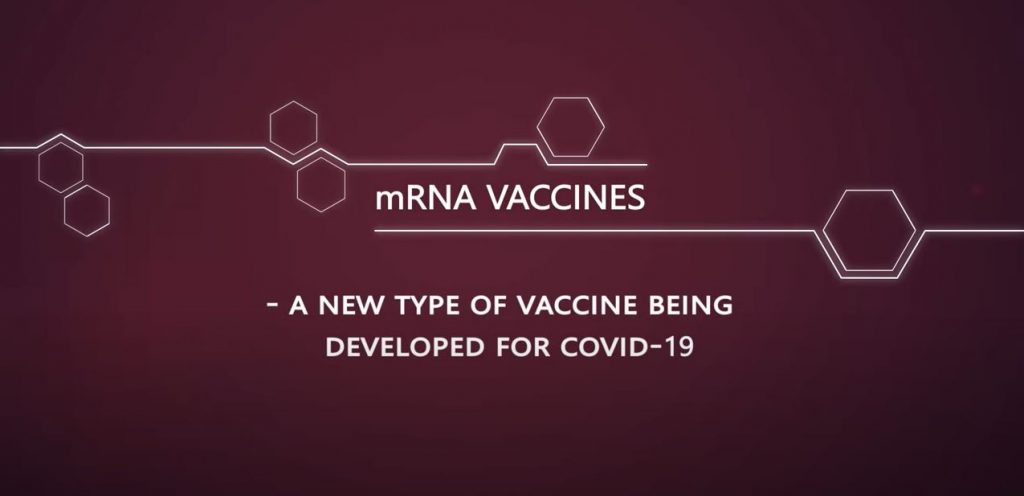How does the mRNA vaccine work?
- Normal Liver Cells Found to Promote Cancer Metastasis to the Liver
- Nearly 80% Complete Remission: Breakthrough in ADC Anti-Tumor Treatment
- Vaccination Against Common Diseases May Prevent Dementia!
- New Alzheimer’s Disease (AD) Diagnosis and Staging Criteria
- Breakthrough in Alzheimer’s Disease: New Nasal Spray Halts Cognitive Decline by Targeting Toxic Protein
- Can the Tap Water at the Paris Olympics be Drunk Directly?
How does the mRNA vaccine work?
- Should China be held legally responsible for the US’s $18 trillion COVID losses?
- CT Radiation Exposure Linked to Blood Cancer in Children and Adolescents
- Can people with high blood pressure eat peanuts?
- What is the difference between dopamine and dobutamine?
- What is the difference between Atorvastatin and Rosuvastatin?
- How long can the patient live after heart stent surgery?
How does the mRNA vaccine work?
The mRNA vaccine is a vaccine product based on the mRNA structure corresponding to the pathogen antigen protein, which is delivered to human cells through different delivery methods, and then generates the antigen protein after translation and triggers the body’s specific immune response.

The research on mRNA vaccines can be traced back to 1990. Wolff et al. found that the protein product encoded by the gene was produced locally in the muscle tissue of mice injected with plasmid DNA or mRNA containing a specific gene. The immunized animal will produce a specific immune response against the nucleic acid-encoded antigen.
However, due to defects such as instability of mRNA, easy degradation in tissues, and low cell absorption rate, its development has been slow, and more research is still focused on the field of DNA vaccines.
After the 21st century, with the development of mRNA synthesis, modification and delivery technologies, the above-mentioned defects of mRNA vaccines have gradually been overcome, and since then the development of mRNA vaccines has regained attention.
Mechanism of action of mRNA vaccine
The mRNA vaccine is synthesized in vitro and contains the mRNA sequence encoding a specific antigen. When the mRNA vaccine is injected into the body, the mRNA sequence entering the body first needs to enter the cell through the cell membrane.
However, because the mRNA sequence has unstable structural characteristics, the cell Both inside and outside contain more nucleic acid hydrolases, so special protection measures are needed to prevent the mRNA sequence from being degraded, and at the same time, to improve its transmembrane efficiency.
mRNA vaccines usually enter cells in the form of endosomes, but they need to enter the cytoplasm to function.
Therefore, they need to be released from endosomes and avoid premature degradation. The translation and expression process also requires some tools to regulate.
There are currently two forms of mRNA vaccines: traditional mRNA vaccines and self-amplified mRNA vaccines.
The open reading frame (ORF) of the former only contains genes encoding antigens, while the ORF of the latter contains not only genes encoding antigens, but also non-structural proteins required for RNA amplification, which can increase mRNA while increasing The expression level of the target antigen.
In addition to ORF, both vaccines contain a 5’untranslated region (UTR), a 3’untranslated region, a 5’cap structure (Cap) and a 3’poly A tail structure (Poly- A) These structures increase the accuracy and efficiency of mRNA translation while enhancing the stability of mRNA.
In addition to the above structural modifications, which can greatly enhance the stability of mRNA, liposome carriers also play an important role in the stability and translation efficiency of mRNA vaccines.
Delivery vectors can be divided into viral vectors and non-viral vectors.
Viral vectors themselves are immunogenic. Using them as a carrier may cause the body to produce interference antibodies and affect the use of mRNA vaccines.
Among non-viral vectors, liposomes are the most widely used. Liposomes are mainly used in the delivery of mRNA vaccines. The following advantages:
- (1) Liposomes are cystic, which can wrap mRNA in the cavity to avoid degradation by nuclease;
- (2) The properties of liposomes are similar to those of cell membranes, which can increase the efficiency of mRNA entering cells;
- (3) Liposomes can promote the release of mRNA from endosomes into the cytoplasm;
- (4) Easy to quantify production.
How does the mRNA vaccine work?
(source:internet, reference only)
Disclaimer of medicaltrend.org
Important Note: The information provided is for informational purposes only and should not be considered as medical advice.



